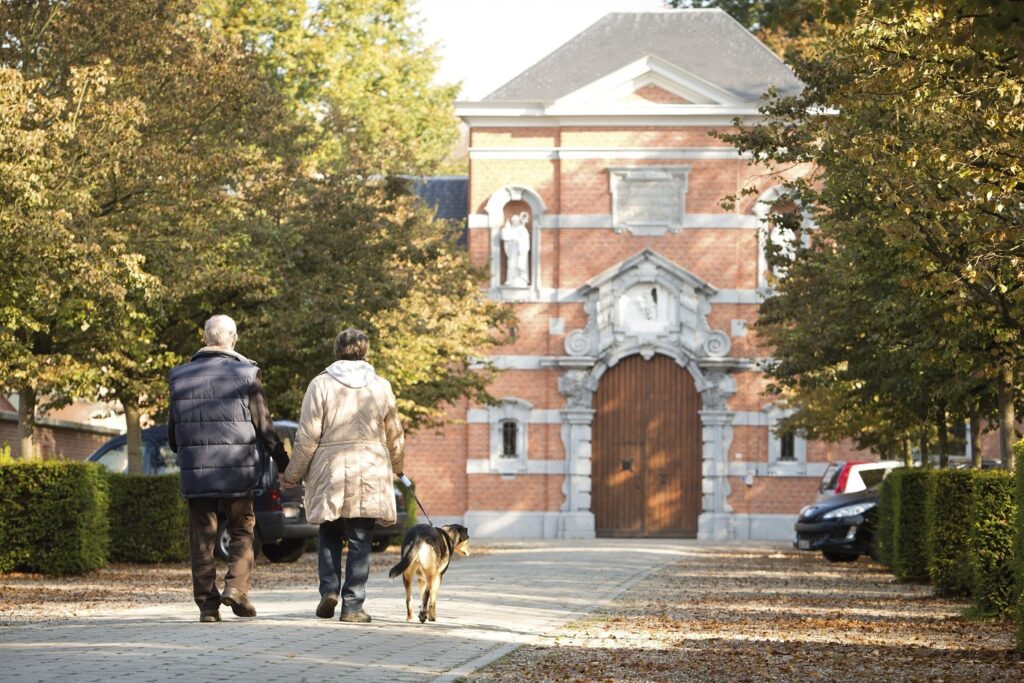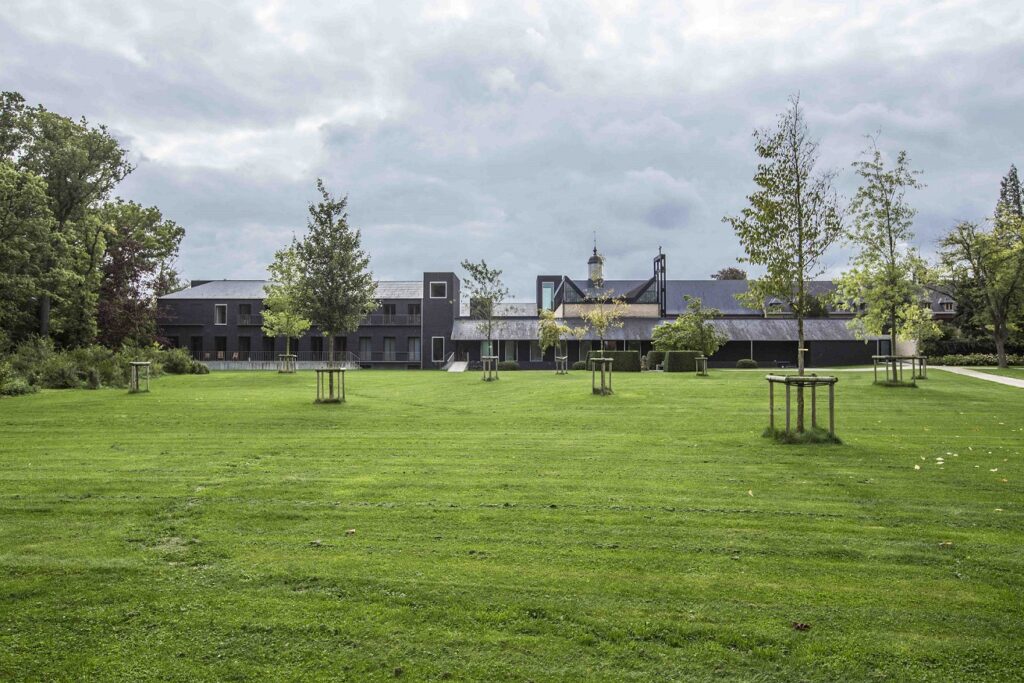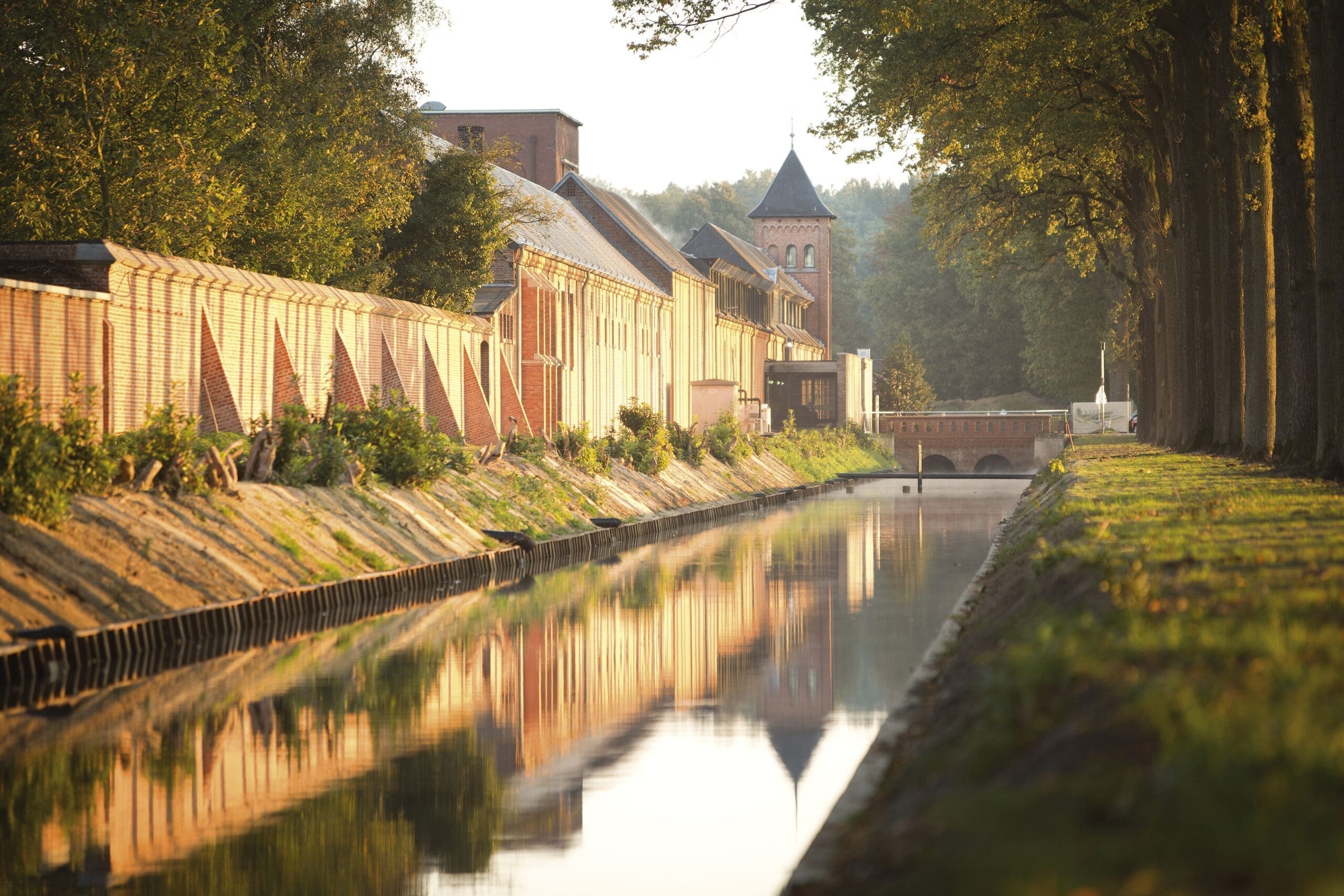Of the 170 Trappist monasteries in the world, just 11 still brew beer, and of those, Belgium boasts five. Why not, I thought, arrange a bike ride between Westmalle and Westvleteren, the two remaining Trappist breweries in Flanders?
This was more complicated than you might imagine. The two monasteries are a hefty 172km apart, but no-one wants to take the ugly direct route along a busy highway. And since my companions and I all live in Brussels, it is already some endeavour to reach the start of the route.
But we made it. And here is how you too can cross the country the scenic way, combining the nation’s two great loves: beer and bicycles.
Day one: Vilvoorde to Malle (69.7km)
Taking their name from La Trappe Abbey in northwest France, the first Trappists followed austere reforms to the Cistercian order, including a meagre diet. Our Trappist bike tour, on the other hand, will structure the first day around a hearty lunch in Lier. But first, coffee as we depart on the morning of the first truly warm weekend of the year.
After a bumble around the roadworks at Vilvoorde, we find the path along the Zenne (Senne) river that we follow past Zemst to Mechelen. The Zenne, a once notoriously polluted river that was famously built over in central Brussels in the 19th Century, appears in better shape these days and feeds into the Dyle north of Mechelen.
With its large market square adjacent to the UNESCO World Heritage tower of St Rumbold's Cathedral, Mechelen would have been a great place for an elevenses break. However, as we’re a bit behind schedule, we pose for a few photos and continue north through the attractive Tivolipark to Fort Walem, which was built 150 years ago to protect the old main road between Antwerp and Mechelen. In 1914, Belgian troops inside the trapezoidal structure held off a German attack for five days. Nowadays, the crumbling fort is home to bats.
Our route now takes us along an appealing stretch of the Nete river, with canals and artificial lakes on both sides, through to Duffel – a small town that gave its name to a heavy woollen cloth from which the English made a coat for Paddington bear (or something like that). By lunchtime, our second World Heritage site, the beguinage of Lier, reassuringly appears on the horizon.
Like many well-heeled Flemish market towns, Lier is overlooked for Bruges, and thankfully so. But it nevertheless attracts a good share of visitors, and you’re best advised to book in peak periods if you want to be sure of a good dining spot on a terrace. Zuster Agnes, appropriately just up from the beguinage, is recommended, especially its hemelse rijstpap (heavenly rice pudding – though to be fair, it’s self-proclaimed heavenly).
This last leg of the route takes us past a second fort built to protect Antwerp as a redoubt a century-and-a-half ago. Fort Oelegem formed part of a belt of forts and is now, too, home mostly to bats. And so, with echolocation-like navigational ease – or the wonders of the Fietsknoop app, which helps you plot a route along the vast network of cycle paths crisscrossing the country – our brakes screech to a halt at the imposing Westmalle Abbey.

Westmalle Abbey's main gate
The second-largest Trappist brewer after Chimay, the closed-off, high-walled construction looks less like a house of prayer and more like a house of beer, but it is surrounded by a pleasant moat and adjacent pathways. To sample the brews, you’ll need to cross the nearby road to the Café Trappisten Westmalle, which offers a comprehensive brasserie-type menu as well as a taster option of all three types of beer: the Dubbel, a brown beer (7%); the Tripel, a strong pale beer (9.5%); and the lesser-known Extra, a weaker offering at a mere 4.8%. The derivation of the Tripel designation is uncertain, although it is generally considered an indication of the strength of the beer and was first used by Westmalle in 1956, setting a trend for other Belgian breweries.
The nearby small town of Malle boasts a couple of hotels, including the pristinely renovated De Kasteelhoeve, and a few dubious, neon-lit nightlife propositions aimed squarely at the surprising number of restless youths kicking about. Even more unexpected, we find a bar, Den Berg, with two full-sized snooker tables. Paying our respects to Flemish world champion Luca Brecel, we pop inside.
Day two: Malle to Ghent (106.4km)
Conscious of the extra distance to be covered, we’re up and rolling by 8.30am, and already a little saddle sore. The route through the leafy suburbs of Antwerp, however, is a mild comfort. For several long stretches, we pass mansion after mansion, which brings to mind my overriding apology for cycling: it’s one of the best ways to see a country – its contrasts and its communities. These verdant paths are all very idyllic, but now please give me a gloomy graveyard. No such luck, but we do soon run up against our first major obstacle: the Scheldt river.
Although diligently following the bike node points, our navigational team has failed to anticipate the lack of a bridge, and the required ferry has just paused for lunch. Stranded riverside with no refreshments within easy reach, we stew under the midday sun. Sint Niklaas is still a good 25km away and it is a blessed relief when we finally rock up on its main square – apparently the largest in Belgium – for a late lunch, knowing we’ve broken the back of this day’s ride.
The large space, which is lined by traffic, plays host to a range of events, and we’ve arrived on day two of the Internationaal Vendeltreffen, a festival of waistcoat-wearing and banner tossing. It’s a colourful spectacle that purports to celebrate culture, tradition and international friendship.
After lunch, we make a strategic decision to ditch the Fietsknoop app, take the direct route to Ghent via Lokeren and grab a tea-time beer at Destelbergen. Ghent offers large churches, canals, gable-roofed marvels and even a castle, but mostly it offers a shower in a hostel on the Graslei. In an effort to pull my weight in the trip’s organisation, I’ve booked a table at a mostly vegetarian restaurant, Epiphany’s Kitchen, which turns out to be quite a treat. I doubt that the ‘epiphany’ experience will turn my companions away from meat, but certainly the Princess Jasmine pizza, whose toppings include falafel, tahini, hummus and cucumber, is a big hit.
Day three: Ghent to Ypres (111.4km)
Padded seats and padded pants don’t seem to salve the saddle soreness of some of the troop, and it is with a grimace that the third day’s biking grinds into gear. However, the morning offers some of the most picturesque cycling of the trip. Our route follows the gently flowing Leie (Lys) river past some highly desirable riverside properties and includes a crossing. We indeed pay the ferryman, a cheerful fellow with a long punt who tells us he’s taking a break from his modelling job (presumably in the same way that we’re taking a break from the Tour de France).
The afternoon is a little more sobering as we will pass by the Tyne Cot Commonwealth War Graves Cemetery, which is around 9km northeast of Ypres. The cemetery’s name is believed to have been coined by the Northumberland Fusiliers, who saw similarities between the German pillboxes on the site and typical Tyneside workers' cottages. Very little today reminds one of the carnage that took place over a century ago, except row upon row of white tombstones.
There is more solemnity as we arrive in Ypres in time to witness the Last Post at the Menin Gate, the first memorial to the missing, presumed killed on the Ypres Salient in World War I. The brief ceremony is held every day at 8pm and features a range of commemorative readings and hymn singing, along with a lone bugler playing the Last Post.
Day four: Ypres to Veurne (42.3km)
Vleteren is now less than 20km away and the prospect of a liquid lunch of Belgium’s most-fabled Trappist beer, Westvleteren, is enough to get our weary legs rotating for one final day. We reach our destination around the mid-morning coffee breaktime, although we decide, correctly, to move straight to the promised tipple. At over 300km in just over three day’s peddling, it’s well deserved.

Westvleteren Abbey
The St Sixtus Abbey, Westvleteren, is more secluded than its counterpart in Westmalle, but an attractive visitor centre lies directly opposite its main entrance. It’s here on the sunny terrace of the brasserie that we dutifully sample all three types individually (no taster menu is available): the relatively light, Blonde (5.8%); the 8 (8%); and the 12, which is actually 10.2% and frequently ranked as the best beer in the world. As someone who thinks that the finest beer is the one he’s about to drink, I’ll withhold my judgement.
Limited availability might play a role in its mystique, as customers are restricted to purchases of two crates of 24 bottles for onsite pick-ups and one for home deliveries, each with specific collection times listed on the brewery’s website. Visitors can also pick up a couple of gift sets of six bottles at the centre’s shop (though best get there early while supplies last), along with a range of typical merch. Been there, bought the t-shirt, spilt beer over it? Unlikely: the Westvleteren 12 retails at €52 per crate with a returnable deposit of €20 for the bottles.
The monastery, which dates back to 1831, has only been selling beer to the public since 1931. It has, however, been selling beer to us for several hours now, and yes, we do have homes to go to. A couple of us plan to head to the coast and then take the tram from Nieuwpoort to Ostend. It proves to be a leg too far. Battered by coastal winds, we discover with relief that trains run directly from Veurne to Brussels. Nevertheless, the winning formula has been proven: two Trappist abbeys on two wheels make for a fun four-day weekend.

